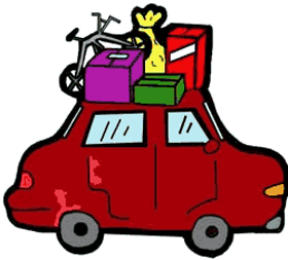Memorial Day weekend traditionally kicks off the vacation season, and this year the travel industry anticipates a record number of Americans will be staying in the U.S. and driving to their destinations. With 82 percent of Americans expected to take at least one domestic road trip this spring and summer, how can they get there safely and without the hassles?
Unfortunately, we know from experience that more cars on the road mean more stress, more inconvenience, and more accidents, said Ray Palermo, director of public information for Teachers’ Insurance Plan. But a driving vacation can be a great way to go if drivers keep some simple tips in mind.
Pay Attention – A Teachers Insurance Plan study revealed that the number one fear of drivers is that the other driver is not paying enough attention to the road. And, their fear is well founded: 76 percent of drivers admit to doing things that distract them from driving, including reading (32 percent) talking on a cell phone (29 percent), and combing hair (17 percent), and 20 percent admit to being so busy, that they have steered the car with their thighs.
Know Where Youre Going – Know how to get where youre going before you leave, and if you do make a wrong turn or miss your exit, dont cut across lanes of traffic to get to your exit. Stay the course and more often than not you can return to the correct route quickly and without endangering your self and others.
Calm Down – According to a Teachers Insurance Plan study, 37 percent of drivers experience road rage within a 6-month period. Dont overreact and dont compound another drivers foolish driving maneuver by making your own. When encountering a tail-gaiter or someone cutting you off, remain focused on maintaining a buffer of safety between your car and the events around it.
Check It Out – Addressing car care before heading out for a road trip will save money and aggravation. Minimally check all fluid levels, change the oil if its due, clean the cars windshield, windows and headlights, make sure your lights and directionals are working properly, and check the tire tread and air pressure before you leave.
Cash & Carry – Although most businesses take credit cards, its still advisable to have some cash on hand for emergency tows and tire changing. And, when it comes to emergencies, always keep your car well stocked. A first aid kit should minimally include bandages, tape, wash & dry cloth and a topical antiseptic. For your motoring needs include oil, anti-freeze, transmission and brake fluids, basic tools, signal flare, bright cloth to tie around the door handle if disabled, flashlight (with fully charged batteries) and duct tape.
Sleep – If you are taking a long driving trip and get tired, take a nap, drink some coffee, but dont push it – call it a night and get a motel room.
Drinking & Not Driving – Drinking and driving dont mix – ever. And, if you are in a resort area or place where others may be over indulging, you’ll need to stay even more aware and alert to those drivers.
Accidents Happen – Even the best drivers can get unlucky behind the wheel. Know what to do if you have an accident: 1) Stay at the scene until police arrive. 2) Make sure you, your passengers and all others involved are safe. 3) Exchange driver and car insurance information. 4) Do not speak or admit fault about the accident to anyone except your insurance company or a police officer. 5) If possible, move the car off to the right shoulder of the road.






